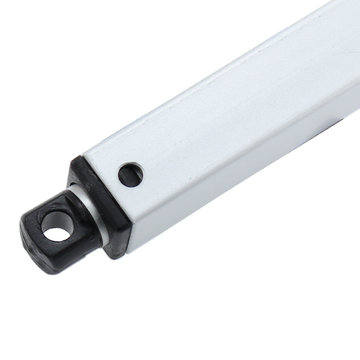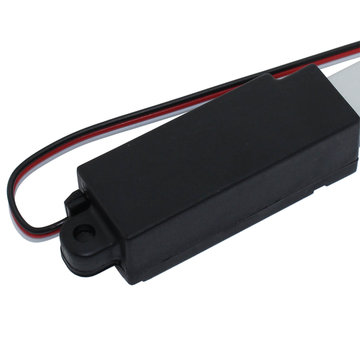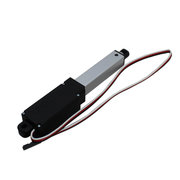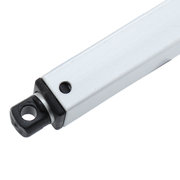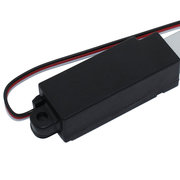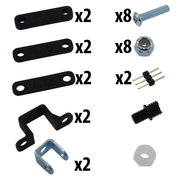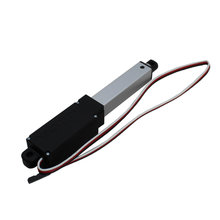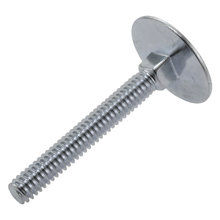Linear Servo Actuator L16-R 50 mm Stroke 35:1 6v
am-3515
$74.90
This linear servos operates as a direct replacement for standard analog rotary servos. They use the same standard 3 wire connector, ground power and control. Regardless of how you drive your servos...Read More
Product Overview
Loose Hardware Included with Actuator:
- 4 - 10-32 Screws
- 4 - 10-32 Nylock Nuts
- 2 - PWM Header
- 2 - Mounting Brackets
- 2 - Rod End Brackets
Specifications
- Back Drive Force: 31N
- Closed Length (Hole to Hole): 118 mm
- Feedback Potentiometer: 6kΩ±50%
- Free Speed: 32 mm/s
- Maximum Force, Lifted: 50N
- Maximum Side Load, Extended: 20N
- Maximum Static Force: 250N
- Peak Efficiency Point: 24N @ 24 mm/s
- Peak Power Point: 50N @ 16 mm/s
- Stroke: 50mm
- Weight: 0.2 lbs
Documents
Returns
Returns are accepted within 30 days of purchase.
View our return policy here.
Recommendations
4 reviews
-
Failed soon after 1 month warranty finished. At...
Failed soon after 1 month warranty finished. At $US70 we expected a lot longer life. Not in our budget to replace.
-
FRC Competition Irregularities
FRC Team 5534 installed one of these on their 2022 robot and experienced some strange behavior. During the autonomous period of the match, the actuator was supposed to retract completely and stay there. Coding was done in Java and when tested at the build space, on a wireless connection, it worked as expected. When tested at a competition, while tethered on a practice field, it worked as expected. However, when on the competition field, during qualification matches, while attached to the field network, during the autonomous period of the match, the actuator did not retract as expected. During the teleop period of matches, the actuator was operational using buttons on the XBox controller.
-
WARNING: SPECIAL CODE TO MAKE WORK WITH FRC!!!
We had code to run a servo and it didn't work. We tested this with a servo tester and it worked beautifully. Then we put a servo on instead of this connected to the RoboRio and it worked great. Much head scratching. It turns out that the min and max pulses are DIFFERENT than a servo so you can't just use the normal servo class with set(0.0) and set(1.0). I searched and found this ( https://www.chiefdelphi.com/t/anyone-have-servo-example-code/155951/7 ) So the code to get it to work: beakActuator = new Servo(RobotMap.BEAK_ACTUATOR_CHANNEL); beakActuator.setBounds(2.0, 1.8, 1.5, 1.2, 1.0); beakActuator.setSpeed(1.0); // to open beakActuator.setSpeed(-1.0); // to close *Edit by AndyMark Thank you for providing a clearer example for this product. We've rolled this example into our User Guide and have posted this.
-
Actuator L16-R
5 Stars


